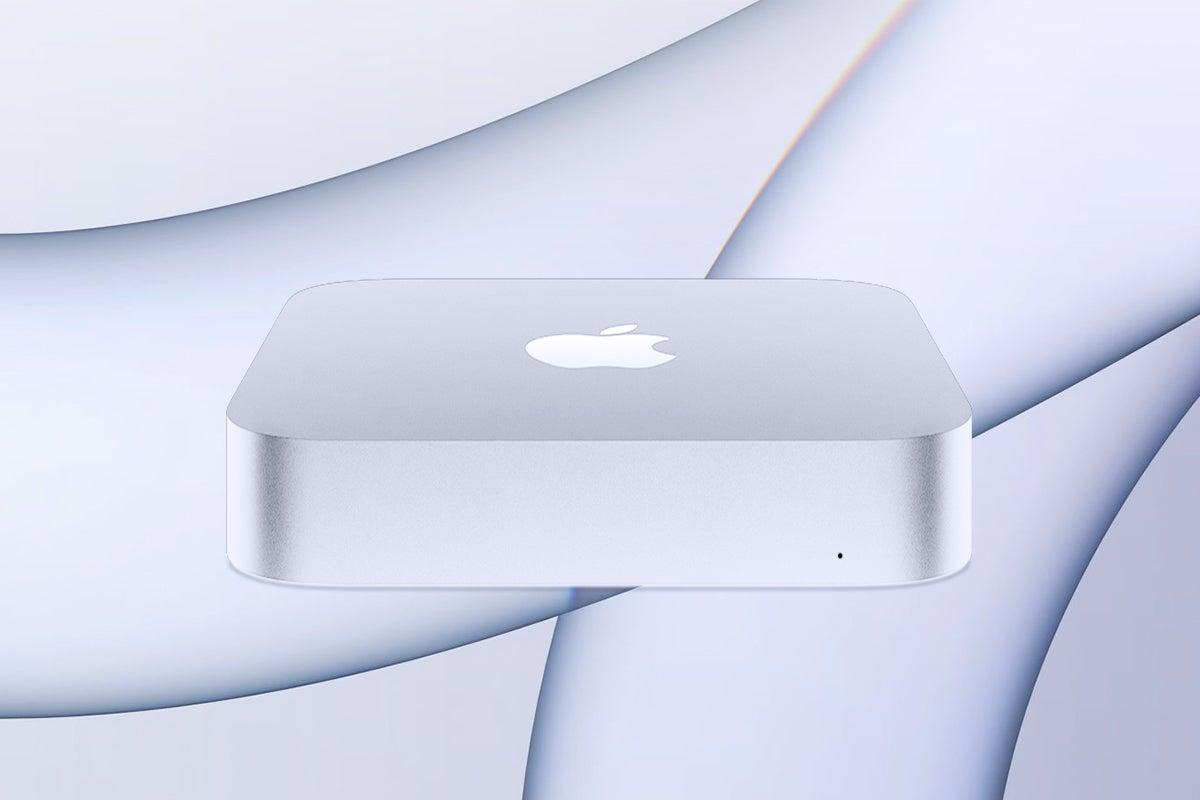
In today’s digital age, Mac computers have become a popular choice among users for their sleek design, user-friendly interface, and powerful performance. However, for those new to the Mac ecosystem, navigating through its unique features and functionalities can be quite daunting. If you find yourself in this situation, fear not! This article will serve as your comprehensive guide on how to effectively use a Mac computer. Whether you’re a beginner looking to get started or a seasoned user seeking to enhance your Mac skills, we will cover everything you need to know. From understanding the basics of the operating system to mastering advanced techniques, brace yourself for a transformative Mac experience. So, grab your keyboard, power up your Mac, and let’s delve into the world of Mac computing!
Setting Up Your Mac Computer: A Step-by-Step Guide
Setting up your Mac computer can be a breeze with this step-by-step guide. Whether you’re a new Mac user or just looking for a refresher, we’ve got you covered. Follow these simple instructions to get your Mac up and running in no time!
First things first, let’s start by unpacking your shiny new Mac computer. Carefully remove it from the box and make sure you have all the required accessories, such as the power adapter and any peripherals you may have purchased. Once you have everything, you’re ready to move on to the next step.
Next, connect the power adapter to your Mac and plug it into a power outlet. Your Mac may already have some charge, but it’s always a good idea to give it a full charge before diving into setup. Once your Mac is connected to power, you can press the power button and wait for it to start up.
After your Mac has turned on, you will be greeted with the set-up assistant. This is where you will make important initial choices, so pay attention! The first decision you’ll make is about your language preference. Choose the language that you’re most comfortable with and click “Continue” to move on.
The next step is to connect to a Wi-Fi network. This is crucial for accessing the internet and essential services. Click on the Wi-Fi icon in the top-right corner of the screen to reveal the available networks. From the list of networks, select the one you want to connect to and enter the password if prompted. Once connected, click “Continue” to proceed.
Now it’s time to set up your Apple ID. Your Apple ID is your key to accessing all of Apple’s services, such as iCloud, the App Store, and more. If you already have an Apple ID, you can sign in with it. If not, click “Create Your Apple ID” to begin the registration process. Follow the on-screen instructions to create a new Apple ID using your email address.
Congratulations! You’ve successfully set up your Mac computer. Now you can start customizing it to suit your needs. Don’t forget to explore the dock, where you’ll find commonly used applications like Safari, Mail, and Finder. You can also visit the App Store to download additional apps or explore the System Preferences to fine-tune your Mac’s settings.
In conclusion, setting up your Mac computer is a straightforward process that anyone can do. By following these steps, you’ll have your Mac up and running in no time. Enjoy your new computer and all the amazing things you can do with it!

Navigating the Mac Operating System: Understanding the Basics
Paragraph 1: Getting started with your new Mac computer can be exciting, but also a bit overwhelming if you’re new to the Mac operating system. Don’t worry though, because in this post, we’ll guide you through the basics of using a Mac computer and help you become familiar with its navigation. By the end of this article, you’ll gain the confidence to use your Mac efficiently and effortlessly.
Paragraph 2: The menu bar at the top of your Mac screen is your essential tool for navigating through various applications and settings. It always remains fixed at the top, providing easy access to important features. By clicking on the Apple logo on the left, you’ll find a drop-down menu with options like System Preferences, About This Mac, and more. Familiarize yourself with these options as they are useful for personalizing your Mac experience.
Paragraph 3: One of the most notable features of the Mac operating system is the Dock, a handy toolbar located at the bottom of your screen. This allows you to access frequently used applications and folders with just a single click. To customize your Dock, simply open an application or folder and then right-click on its icon in the Dock. From there, you can select options like “Keep in Dock” or “Remove from Dock.” Additionally, you can rearrange the icons by dragging them to your preferred location.
Paragraph 4: Spotlight Search is a powerful tool that every Mac user should be familiar with. It allows you to quickly find files, applications, emails, and even launch websites just by typing keywords in the spotlight search bar, which is usually located at the top-right corner of your screen. To access the search bar, simply click on the magnifying glass icon or press Command + Spacebar on your keyboard. With Spotlight Search, you’ll never waste time searching for files again!
Paragraph 5: Mac computers offer various gestures to further enhance your navigation and productivity. For example, you can use a two-finger swipe on your trackpad to scroll through documents or web pages. Similarly, a three-finger swipe allows you to switch between applications effortlessly. Learning these gestures will make your Mac experience more fluid and enjoyable. To further explore the available gestures and customize them to your liking, head over to System Preferences > Trackpad.
That wraps up our guide on how to use a Mac computer and understand its basic navigation. Take your time to explore and experiment with the features mentioned here, and soon you’ll become a proficient Mac user. Remember, practice makes perfect, and before you know it, you’ll be navigating your Mac like a pro!

Optimizing Your Mac for Better Performance: Essential Tips and Tricks
Having a Mac computer can provide you with a smooth and efficient computing experience. However, over time, your Mac may start to show signs of sluggishness or decreased performance. Don’t worry, though! There are several tips and tricks you can follow to optimize your Mac and bring back its snappy performance. In this post, we will explore some essential techniques that can help you optimize your Mac and maximize its capabilities.
1. Keep your software up to date: One of the most crucial steps in optimizing your Mac is making sure that you have the latest software updates installed. These updates not only provide bug fixes but also help in improving the overall performance of your Mac. To check for updates, go to the Apple menu and select ‘Software Update’.
2. Remove unnecessary startup items: When your Mac starts up, it loads several applications and processes in the background. However, having too many startup items can slow down your Mac. To manage them, go to ‘System Preferences’, select ‘Users & Groups’, and then click on your username. Navigate to the ‘Login Items’ tab and remove any unnecessary apps from the list.
3. Clean up your hard drive: Over time, your Mac’s hard drive can get cluttered with unnecessary files, which can significantly impact its performance. To clean up your hard drive, go to ’Finder’, click on ‘Applications’, then select ‘Utilities’, and open ‘Disk Utility’. From there, select your Mac’s hard drive and click on ‘First Aid’ to repair any potential disk errors. Additionally, you can use a third-party app like CleanMyMac to remove unused files and free up storage space.
4. Optimize your startup disk: If you notice your Mac taking a long time to start up, you can optimize your startup disk to improve boot times. To do this, go to ‘System Preferences’, select ‘Startup Disk’, and click on ‘Manage’. From there, you can review and remove unwanted files, language packs, and duplicates that may be slowing down your Mac’s startup process.
5. Enable storage optimization: Another effective way to optimize your Mac’s performance is by enabling storage optimization. This feature, available in macOS, automatically manages your storage to free up space. To enable storage optimization, go to ‘Apple menu’, select ‘About This Mac’, and click on the ‘Storage’ tab. From there, click on ‘Manage’ and check the box for ‘Optimize Storage’. This will remove unnecessary files and automatically move files to iCloud if needed.

Mastering Mac Applications: Getting the Most Out of Key Software Programs
Mac computers are renowned for their exceptional software programs that offer a wide range of capabilities to users. Understanding how to effectively use these applications can significantly enhance your productivity and streamline your workflow. In this post, we will explore some essential tips and tricks to help you master the key software programs on your Mac and get the most out of your computer’s capabilities.
1. Leveraging the Power of Keynote Presentations
Keynote is Apple’s powerful presentation software that allows you to create stunning visual displays with ease. To make the most of Keynote, consider the following tips:
- Use high-quality graphics, animations, and transitions to make your presentations captivating.
- Utilize flexible formatting options to customize your slides according to your preferences.
- Employ the presenter mode to view your notes while delivering a seamless presentation.
2. Optimizing Data Management with Numbers
Numbers is Apple’s spreadsheet application that offers efficient data management capabilities. Follow these tips to make the most out of Numbers:
- Utilize built-in formulas and functions to automate calculations and save time.
- Create visually appealing charts and graphs to effectively present your data.
- Collaborate with others by sharing and editing spreadsheets in real-time.
3. Enhancing Content Creation with Pages
Pages is Apple’s word processing software that empowers you to create professional-looking documents. Here are some tips to enhance your content creation experience:
- Utilize templates to kickstart your projects and customize them to match your style.
- Take advantage of the powerful editing tools, such as track changes and comments.
- Collaborate seamlessly by sharing documents and working simultaneously with others.
4. Streamlining Email Communication with Mail
Mail is a versatile application that enables you to manage your emails efficiently. To maximize its potential, consider the following tips:
- Organize your emails using folders and smart mailboxes.
- Utilize rules and filters to automatically sort and prioritize incoming messages.
- Customize your email signature to maintain a professional and consistent appearance.
5. Boosting Your Productivity with Reminders
Reminders allow you to stay organized and on top of your tasks. Use these handy tips to boost your productivity:
- Create lists and set due dates to ensure you never miss an important task.
- Set location-based reminders to receive alerts when you arrive at a specified place.
- Synchronize your reminders across all your Apple devices for seamless accessibility.
By mastering these key software programs on your Mac, you can unlock a world of possibilities and accomplish tasks with greater efficiency. Whether you’re creating presentations, managing data, composing documents, organizing emails, or staying on top of your tasks, understanding the full potential of these applications will undoubtedly enhance your Mac experience.

Enhancing Productivity on Your Mac: Customizing Settings and Shortcuts
One of the great advantages of using a Mac computer is the ability to customize settings and create shortcuts that can significantly enhance your productivity. By tailoring your Mac to suit your specific needs and workflow, you can save time and streamline your tasks. In this post, we will explore some power-packed methods to supercharge your productivity on a Mac by customizing settings and utilizing shortcuts.
1. Customize the Dock
The Dock is your Mac’s quick access panel, allowing you to launch applications and switch between them effortlessly. To customize the Dock, simply right-click on the Dock and select “Dock Preferences.” From here, you can adjust its size, position, and even add your most-used applications for quick access. Organizing your Dock with frequently used apps can save you valuable time spent searching for them in your Applications folder.
2. Create Keyboard Shortcuts
Mastering keyboard shortcuts is a game-changer for productivity. Mac users can create custom keyboard shortcuts for practically any menu item in an application. To set up a shortcut, go to the Apple menu > System Preferences > Keyboard > Shortcuts. From there, select “App Shortcuts” and click the “+” symbol to add a new shortcut. Enter the exact menu title and desired keyboard combination, and voilà! You now have a time-saving shortcut.
3. Automate Tasks with Automator
Automator is a powerful tool that allows you to automate repetitive tasks on your Mac. It enables you to create custom workflows by stringing together a series of actions. For example, you can automate the resizing of images, batch rename files, or even create an automated backup routine. Launch Automator from your Applications folder and get creative with the plethora of actions available to increase your productivity.
4. Control Center Customizations
macOS Big Sur introduced the Control Center, a convenient hub for accessing various system settings and controls. To customize the Control Center, click on the Control Center icon in the menu bar and select “Customize Controls”. Here, you can add frequently used controls, such as Wi-Fi, screen brightness, or even Dark Mode, and rearrange them to your liking. By personalizing the Control Center, you can adapt it to your workflow and quickly access essential settings with a single click.
5. Take Advantage of Mission Control
Mission Control is a powerful feature that allows you to view all open windows, desktops, and full-screen apps at a glance. To access Mission Control, swipe up with three fingers on your trackpad or press the Mission Control key on your keyboard. From here, you can effortlessly navigate between windows and desktops, making multitasking a breeze. Customizable gestures in System Preferences enhance this feature further, enabling you to tailor it according to your preferences.
Q&A
Q: What are the basic steps to turn on a Mac computer?
A: To turn on a Mac computer, press the power button located on the top right corner of the keyboard. Hold it down for a few seconds until you see the Apple logo on the screen, indicating that the computer is starting up. Release the power button once the logo appears.
Q: How do I log in to my Mac computer?
A: After turning on your Mac, you will be prompted to enter your username and password on the login screen. Type in your username and password correctly, and then press enter or click the “Login” button. If you don’t have a password, leave the password field blank and press enter to log in.
Q: How do I navigate the macOS interface?
A: The macOS interface is designed to be user-friendly. To navigate, use the mouse pointer to click on items, windows, and menus. You can also use trackpads or multi-touch gestures on compatible Mac computers. The menu bar, located at the top of the screen, provides access to various system functions and application-specific options.
Q: How can I install applications on my Mac?
A: Installing applications on a Mac is simple. First, locate the desired application either on the App Store or from a trusted website. Proceed by downloading the application and then double-click on the downloaded file. Follow the on-screen instructions provided by the installer, and once the installation is complete, the application will be ready to use.
Q: How do I customize my Mac’s settings?
A: To customize your Mac’s settings, click on the Apple logo in the top left corner of the screen and select “System Preferences.” Within System Preferences, you’ll find various categories like “General,” “Desktop & Screen Saver,” “Security & Privacy,” and more. Explore these options to tailor your Mac’s settings to your preferences.
Q: Can I connect external devices to my Mac computer?
A: Absolutely! Mac computers have a range of ports to connect various external devices such as USB drives, printers, cameras, external hard drives, and more. Simply identify the appropriate port on your Mac, plug in the device, and most often, your computer will automatically detect and configure the device.
Q: How can I transfer files between my Mac and other devices?
A: To transfer files between your Mac and other devices (such as smartphones or tablets), you can use various methods. One common way is to connect your device to the Mac via USB and use the built-in file manager or specialized software to transfer files. Alternatively, you can also use cloud storage services, email, or messaging apps to share files wirelessly.
Q: How do I shut down my Mac properly?
A: To shut down your Mac properly, click on the Apple logo in the top left corner of the screen and select “Shut Down.” A confirmation dialogue will appear – click “Shut Down” again to proceed. The system will then close all running applications and safely turn off your computer. It is important to shut down your Mac properly to avoid potential data corruption or loss.
Q: Are there any additional resources available for learning more about Mac computers?
A: Yes, there are plenty of resources available to help you learn more about using Mac computers. Apple’s official website offers extensive documentation, video tutorials, and support forums. Additionally, there are numerous online courses, YouTube channels, and books dedicated to Mac usage and troubleshooting. In conclusion, mastering the art of using a Mac computer can undoubtedly enhance your digital experience and productivity to new heights. From navigating the sleek interface to customizing your preferences, we have covered the fundamental aspects of navigating the Mac ecosystem with ease. Whether you’re a seasoned user or a newbie to the world of Mac, these tips and tricks should empower you to make the most out of your device’s capabilities. Remember, practice makes perfect, so take the time to explore and experiment to truly unlock the full potential of your Mac computer. So go ahead and dive into the world of endless possibilities waiting at your fingertips. With the knowledge gained from this guide, you’re ready to embark on your Mac journey with confidence and efficiency.






